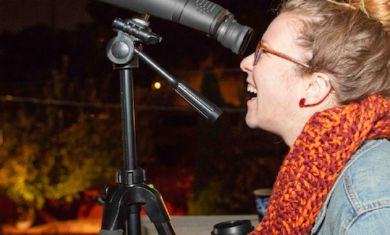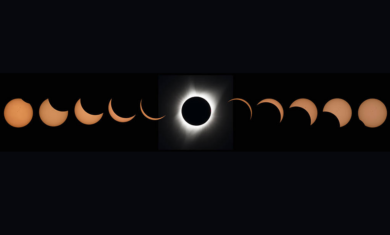Adler Sky Observing 101: What To See
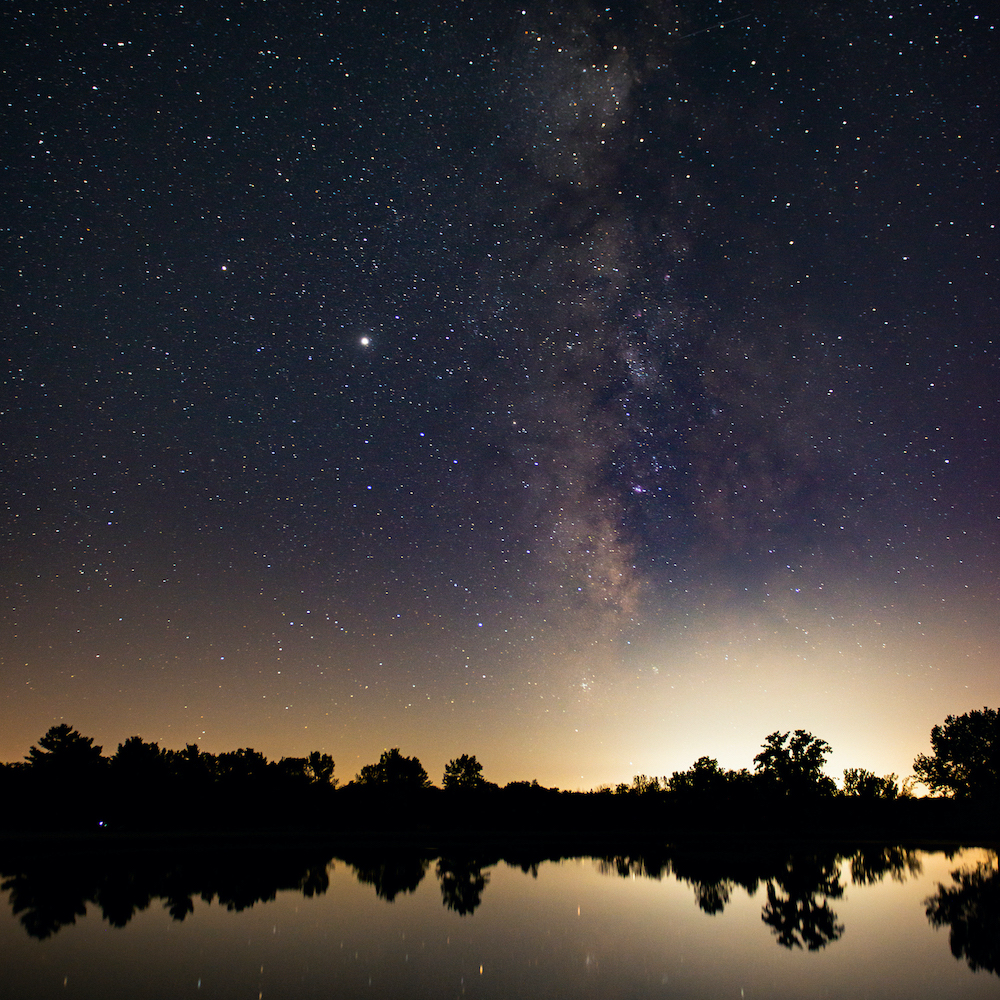
Header Image: Milky Way from Middle Fork River Forest Preserve, Image Credit: Nick Lake, September 19, 2020.
Editor’s Note: This blog was originally published in June 2019 and was updated in April 2022 with more current information.
What’s There To See In Our Night Sky?
From moon phases to meteor showers, the Adler Planetarium has got you covered when it comes to knowing what to look for in the sky. Read our list below to get started!
Moon Phases & Eclipses
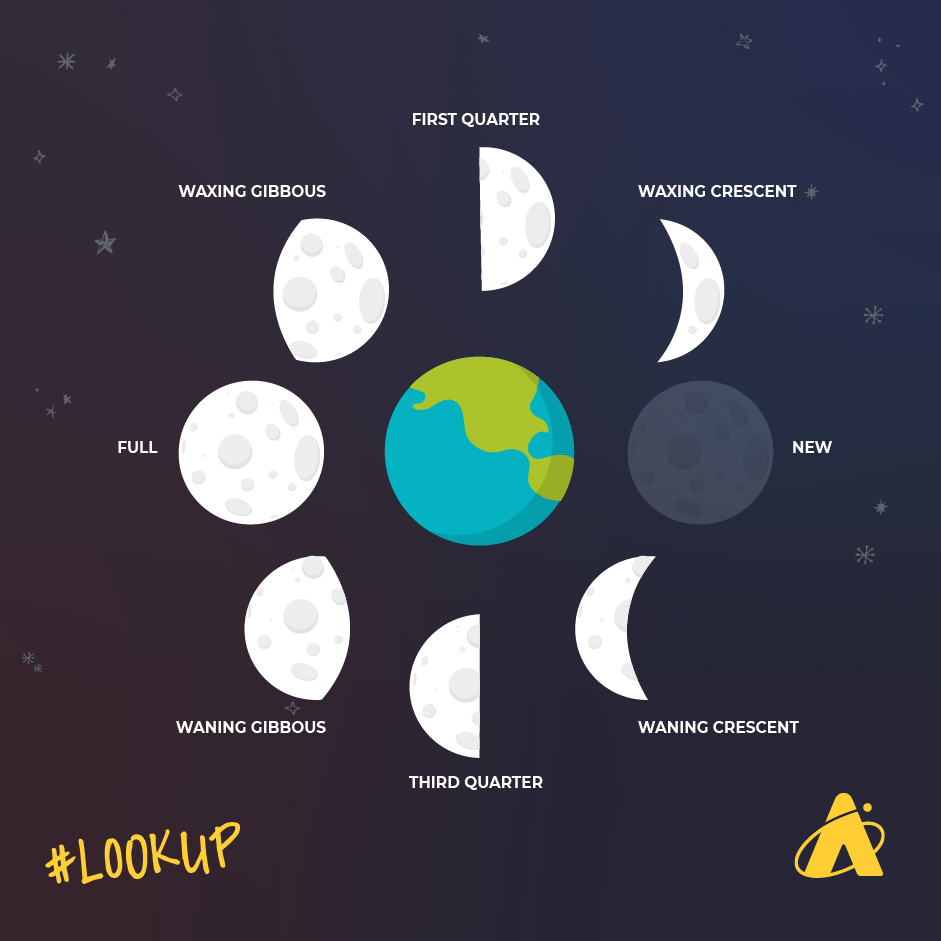
At all times, half of our Moon is lit by the Sun, just as half of the Earth is always lit by the Sun. As our Moon orbits the Earth every 29.5 days, the amount of the “lit part” that we can see changes. We call these the moon phases.
Check out this useful timetable to learn more about when the Moon rises, sets, and what Moon phase is currently happening.
Lunar Eclipses
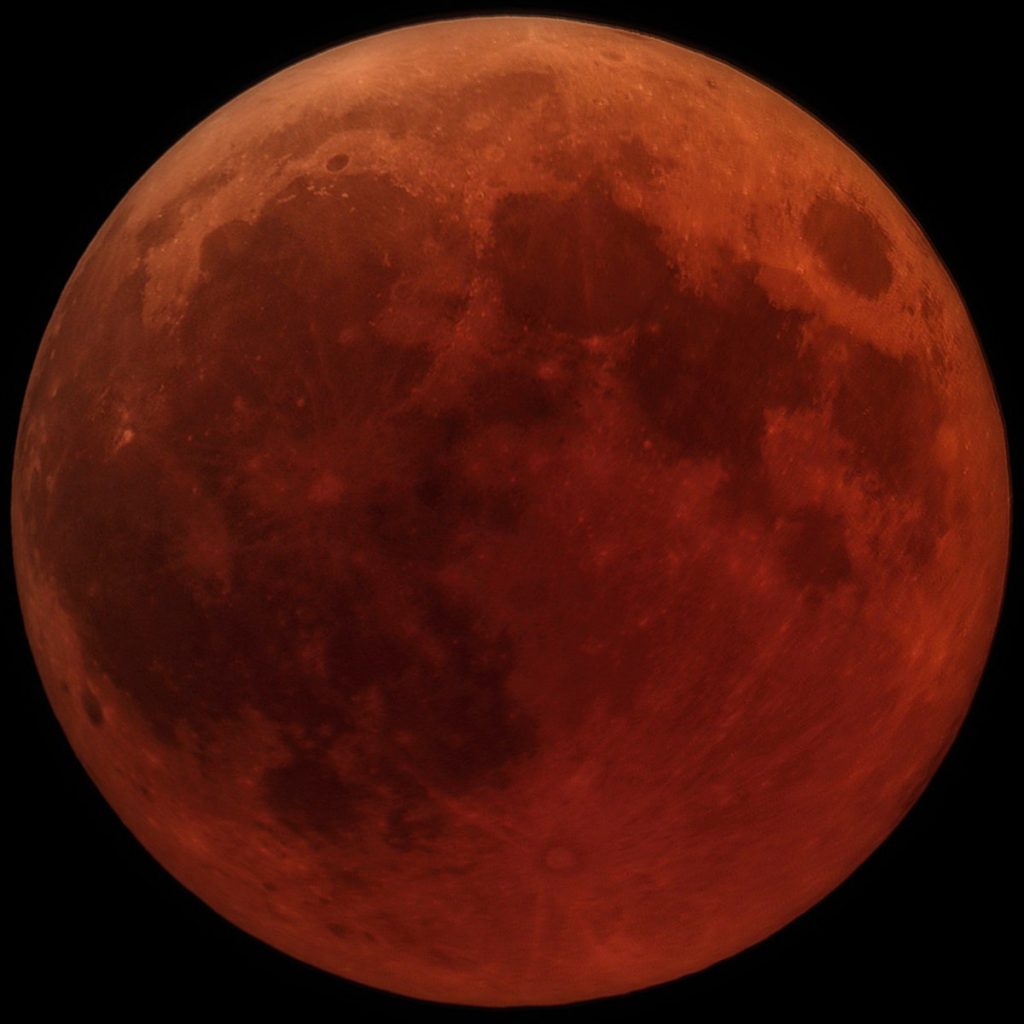
Our Moon orbits the Earth every 29.5 days, and the Moon’s orbit with respect to the Earth is tilted just a bit. If you could see the shadow of the Earth cast into space, the orbiting Moon would usually appear to miss the Earth’s shadow, passing either just above it or just below it at the phase called Full Moon.
A lunar eclipse occurs when the Moon passes through the Earth’s shadow. A lunar eclipse is visible on Earth generally one or two times a year. Lunar eclipses are very accessible to everyone, as you need no special equipment to see them. If the eclipse is happening when the Moon is up above the horizon in your area, then just go outside and look for the Moon!
There are two parts to the Earth’s shadow—a lighter outer part and a darker inner part—so there are three possible types of lunar eclipses. First, if the Moon grazes the Earth’s shadow and only encounters the lighter outer shadow (called the penumbra) this is called a penumbral lunar eclipse.
If the Moon passes partly into the umbra, or the darker more central part of the Earth’s shadow, this is called a partial lunar eclipse. As the Moon encounters more and more of the shadow, you can see the curved shape of the Earth’s dark shadow on the Moon itself, while the rest of the Moon appears brighter.
If the Moon passes fully within the umbra, this is called a total lunar eclipse. At this point, the Moon can appear dusky orange, dusky red, dark gray, or it may almost appear to vanish completely. A few minutes to an hour or so later, the Moon begins to exit the umbra and then exit the penumbra. A total lunar eclipse can last up to a few hours from beginning to end.
Learn more about the different kinds of lunar eclipses here or read about the difference between solar and lunar eclipses here.
Here are the next several lunar eclipses visible from the Chicago area:
- May 15, 2022 (Total Lunar Eclipse) – From the Chicago area: 8:52 pm CT on May 15 to 1:50 am CT on May 16.
- November 8, 2022 (Total Lunar Eclipse) – From the Chicago area: 2:02 am CT to 6:40 am CT.
- March 24, 2024 (Penumbral Lunar Eclipse) – From the Chicago area: 11:53 pm CT on March 24 to 4:32 am CT on March 25. The Moon will only appear a bit more tan-colored or gray-colored, at most.
- September 17, 2024 (Penumbral Lunar Eclipse) – From the Chicago area: 7:41 pm CT to 11:47 CT. The Moon will appear a bit more tan-colored or gray-colored, with a small bit of curved dark shadow on one part.
Solar Eclipses
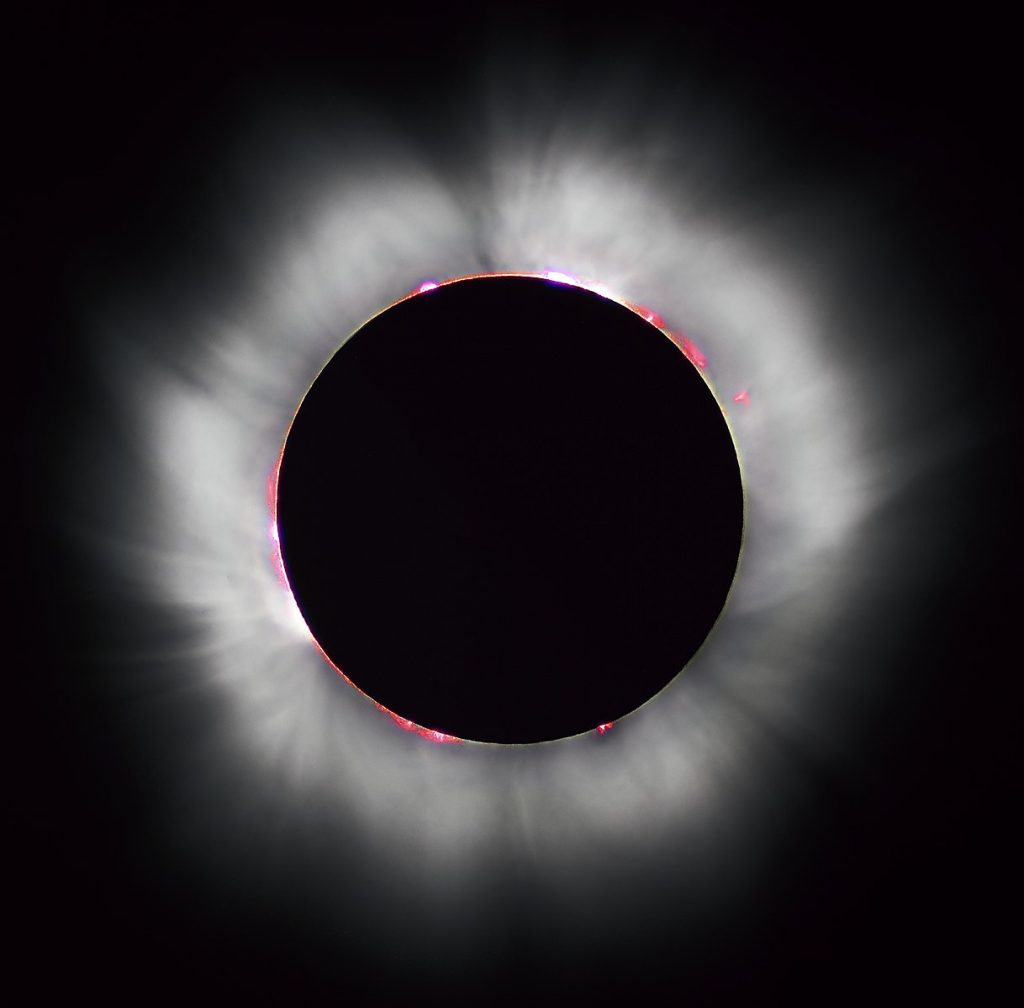
Our Moon orbits the Earth every 29.5 days, and the Moon’s orbit with respect to the Earth is tilted just a bit. If you could see the Moon at the phase called New Moon—which normally is impossible from Earth due to the brightness of the Sun—the Moon would appear to miss the Sun, passing either just above it or just below it.
To look at the bright part of the Sun, you need proper solar viewing glasses or a properly filtered telescope. You should never look at the bright Sun because this could cause permanent eye damage. Never point an unfiltered telescope or your unfiltered eyes at the bright part of the Sun.
A solar eclipse occurs when the Moon passes between the Earth and the Sun, making a direct line between the Sun, Moon, and Earth. A solar eclipse is visible someplace on Earth generally one or two times a year. The Moon can either partially or completely block light from the Sun. If the Moon only blocks a bit of the Sun, leaving some of the bright part of the Sun visible, this is a partial solar eclipse. A partial solar eclipse can generally be seen from a fairly wide region on Earth, and partial solar eclipses can last from a few minutes to up to a few hours.
If the Moon completely covers the Sun and none of the bright part of the Sun can be seen, this is a total solar eclipse. A total solar eclipse is very special and is one of nature’s most amazing sights. A total solar eclipse can only be seen from a narrow path on Earth, called the path of totality, on a specific date at a specific time. Every total solar eclipse starts off as a partial solar eclipse as the Moon gradually covers more and more of the Sun over the course of about an hour or so. When the Moon finally covers all of the bright part of the Sun, this is called totality.
From a single location within the path of totality, the amount of time the Sun is totally blocked by the Moon can range from just a few seconds up to a few minutes. During totality, the Sun’s outer atmosphere, called the corona, can be seen. We usually don’t see the corona from Earth because the Sun’s light is too bright. It can only be seen during totality. After totality, the Moon gradually moves away, blocking less and less of the bright part of the Sun. The total amount of time from the beginning partial eclipse through totality and to the end of the partial eclipse is about three hours.
If you are lucky to be within the path of totality for a total solar eclipse and the Moon blocks 100% of the bright part of the Sun, then for those few seconds or minutes DURING TOTALITY ONLY, you should remove your solar viewing glasses to view the incredible corona. It is completely safe to view the totality phase with just your eyes. After totality is finished, the bright part of the Sun gradually becomes visible again, so as soon as the bright part of the Sun begins to peek past the Moon, immediately put your solar viewing glasses back on and make sure your telescope has a proper solar filter installed.
Here are the next few solar eclipses visible from the Chicago area:
- October 10, 2023 (Partial Solar Eclipse) – From the Chicago area: 10:37 am to 1:22 pm CT. You will need proper solar viewing glasses or a properly filtered telescope to see any of this eclipse. At the maximum point at 11:58 am CT, about 43% of the Sun will be covered by the Moon.
- April 8, 2024 (Partial Solar Eclipse) – From the Chicago area: 12:51 to 3:22 pm CT. You will need proper solar viewing glasses or a properly filtered telescope to see any of this eclipse. At the maximum point at 2:07 pm CT, about 94% of the Sun will be covered by the Moon.
- September 14, 2099 (Total Solar Eclipse) – This is the next time a total solar eclipse will pass through part of the city of Chicago.
Supermoon & Micromoon
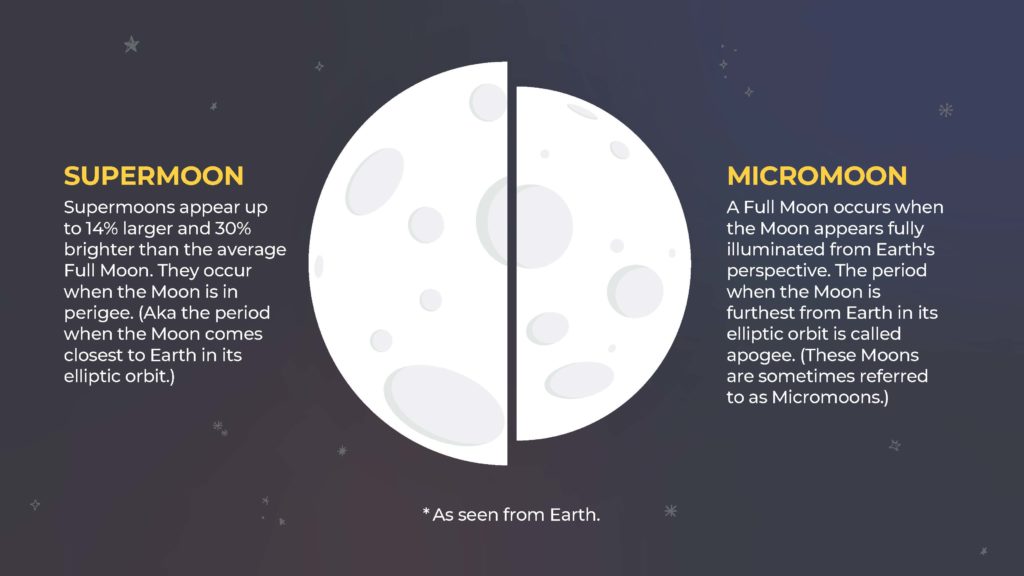
The Moon’s orbit around the Earth is not a perfect circle, so the Moon can be as close as about 225,000 miles from Earth and as far as about 250,000 miles from Earth. If the point at which the Moon is at its closest to Earth coincides with Full Moon, this has come to be known as a supermoon. If the point at which the Moon is at its farthest from Earth coincides with Full Moon, this may be called a micromoon.
At supermoon, the Moon may be up to 14% larger and about 30% brighter than it is at micromoon. Can you actually see a difference in size or brightness? Since you don’t have another Full Moon in the sky to compare it to, you might not. In other words, if you don’t notice a difference, don’t feel bad! We at the Adler might not notice a difference, either.
The astronomical term for three celestial objects in a line is syzygy; in this case, that’s the Sun, Earth, and Moon. The astronomical term for something at its closest to Earth is perigee and something at its farthest from Earth is apogee. Supermoon (arrangement: Moon-Earth-Sun) is a perigee syzygy and micromoon (arrangement: Earth-Moon-Sun) is an apogee syzygy.
Do you need to worry about a supermoon or micromoon? Not at all. Neither one will cause extreme weather events nor earthquakes or volcanic eruptions.
Auroras
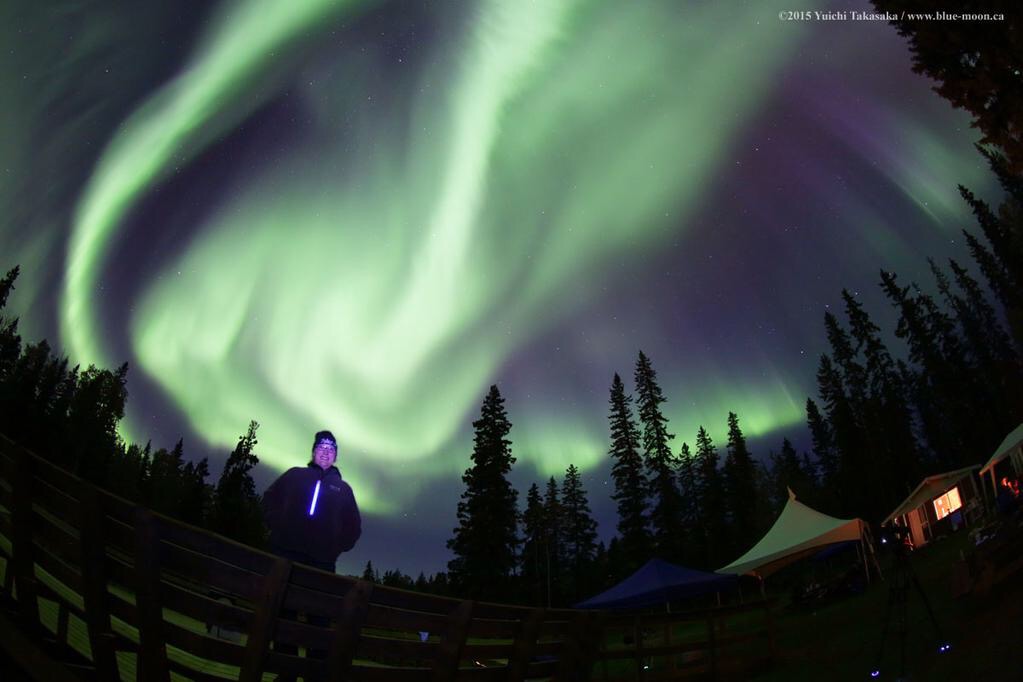
When material streaming off of the Sun interacts with Earth’s magnetic field, this may produce an aurora, sometimes called the northern lights and aurora borealis (if seen in the northern hemisphere) or southern lights and aurora australis (if seen in the southern hemisphere). Positively and negatively charged particles can slam into the upper reaches of Earth’s atmosphere, causing the air to glow.
Different regions of Earth’s atmosphere and different atoms or molecules in those regions cause colors such as green, red, or purple. To the human eye, the colors are not usually very vibrant, appearing more washed out than in photographs, but aurora structures, such as curtains and spokes, and movement of those structures across the sky might be seen, sometimes lasting from minutes to hours.
In the northern hemisphere, auroras (or aurorae) are more likely to be visible in Alaska and northern Canada. Auroras can be spotted in northern Wisconsin and northern Michigan a little more often than in Illinois to the south. Auroras are incredibly difficult to predict, and our prediction abilities for an aurora are about where we were with predicting the weather 30 years ago. In other words, we’re not great at it.
There is no single good place to go see an aurora in our area and there is no preferred direction to look because circumstances are different each time. It helps to go to a dark place far from light pollution, but even then, auroras that are predicted may not appear at all, or they might appear when one was not expected. We cannot predict the likelihood of an aurora more than a day or two in advance. For more information about current aurora predictions, click here.
If you want to travel to see an aurora, head to northern Canada or Alaska—though not in the summertime, as the periods of darkness are much shorter then. Auroras can also appear a little more often around March or September, and they can appear more often during the time when our Sun is more active, called solar maximum. The next solar maximum is predicted to peak around the year 2024.
Spot the International Space Station in the Sky
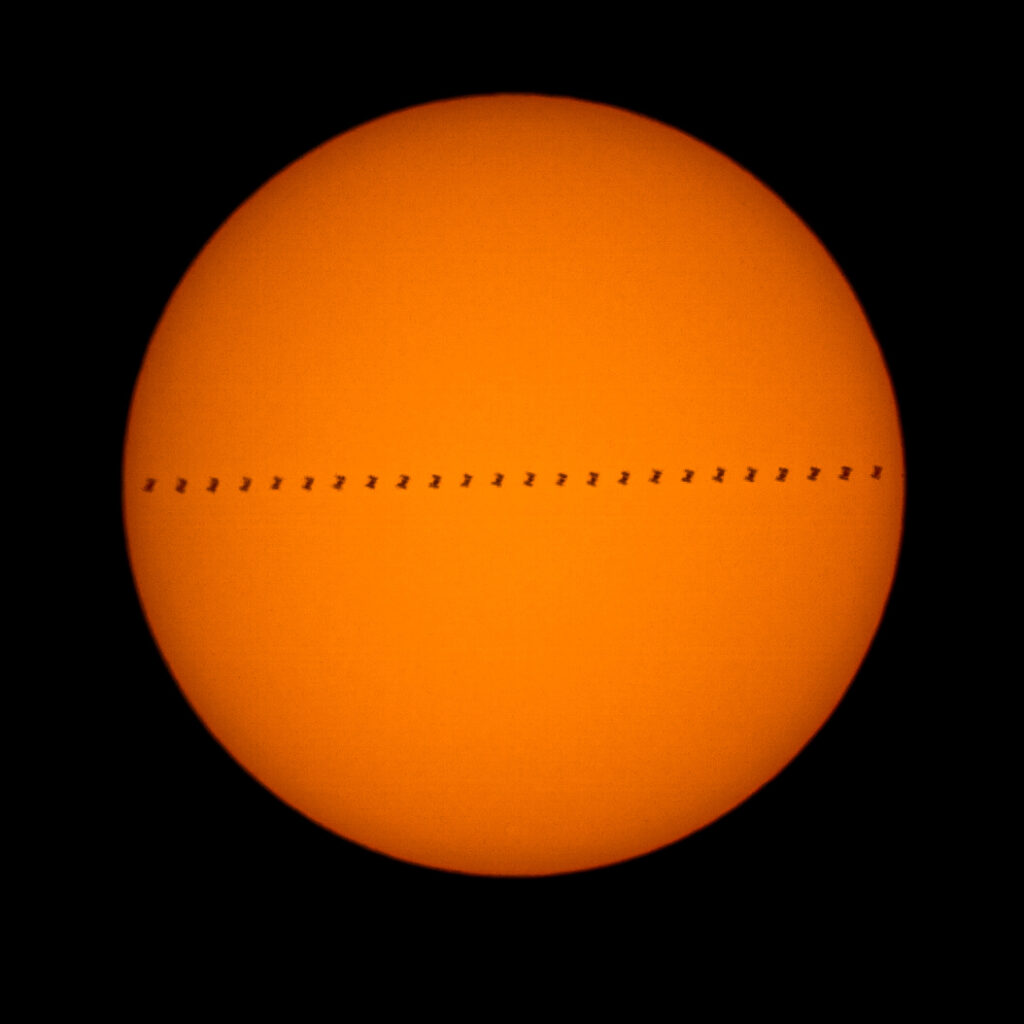
The International Space Station (ISS) is very bright and can even be seen from downtown Chicago! It looks like a bright unblinking airplane. Want to see it? Check out NASA’s Spot the Station or read out our guide!
Meteors & Meteor Showers
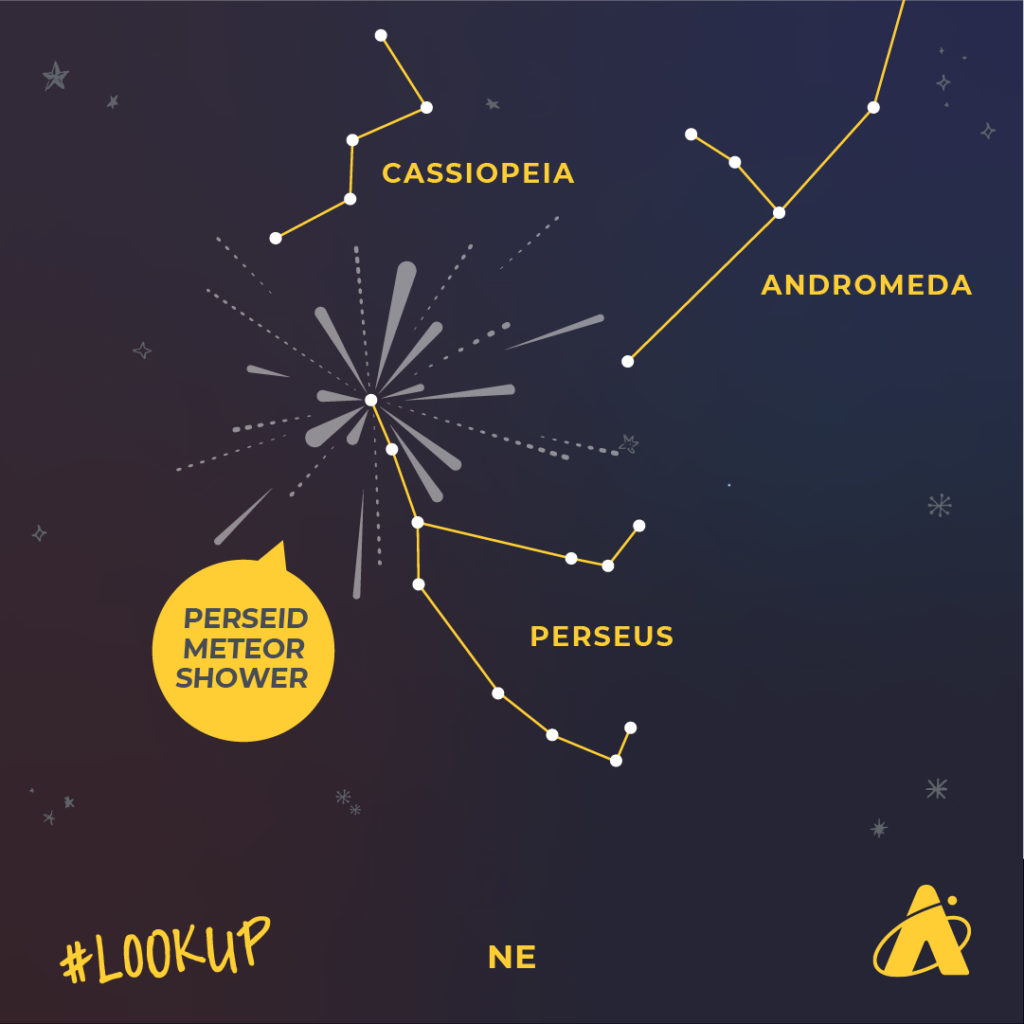
A meteor is sometimes called a “shooting star,” but meteors have nothing to do with distant stars in the sky. They occur when an object from space falls through our atmosphere at tens of thousands of miles per hour or more. Friction within the Earth’s atmosphere causes the air around the object to heat up and glow, and it is this glowing air that we see from the ground as a quick streak of light in the sky. From a dark sky location, a handful of meteors per hour may be seen on any given night.
Meteor showers occur when the Earth runs into the trail of debris in space left by a comet. Meteor showers can be predicted because the Earth encounters these comet material trails at the same time each year as the Earth orbits the Sun.
To see a meteor shower best, go far from city lights to a dark sky location, face east, and look up. Meteors can range across the entire sky. No binoculars or telescopes are needed. Viewing a meteor shower after midnight is generally best. Also, the light from the Moon can interfere with seeing dimmer meteors, even in locations without much light pollution, so Moon phases from Waxing Gibbous to just after Third Quarter Moon may interfere with your view. If you are viewing meteor showers from urban or suburban areas, light pollution may drastically reduce the number of meteors you might see from several dozen per hour to few—or possibly none.
Visit the American Meteor Society website for more meteor information and a calendar of observable meteor showers. The meteor showers with the greatest number of meteors per hour include: the Quadrantids that peak in January, the Perseids that peak in August, and the Geminids that peak in December. The Leonids are often touted as a major shower, but the Leonids are only interesting about every 33 years, give or take. The Leonids may not be a decent meteor shower until the early 2030s, mid-2060s, or late 2090s.
Learn About Observing With Our Astronomy Educators
Tour the night sky with Skywatch Wednesday host Nick who uses cutting-edge visualizations, NASA images, and astrophotography to show you what you can see in the night sky.
Watch exclusive live episodes of Sky Observers Hangout throughout the year! Learn how to observe upcoming cosmic happenings, enhance your astrophotography skills and see celestial objects through a telescope virtually with our astronomy educators.




